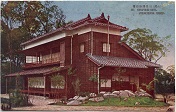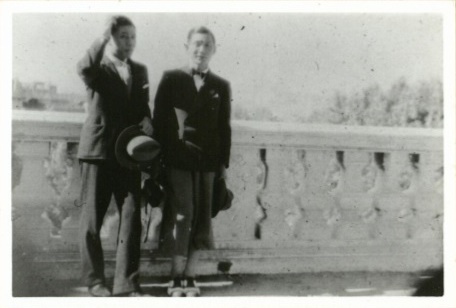 Figure 1: Photograph of Yen Shui-long (right) and Liu Chi-hsiang (left) in France, 1932.
Source: Liu Chi-hsiang Painting and Papers Yen Shui-long (1903-1997, see Figure 1) was born to a rural family in Xiaying, Tainan. He parents died early, so he had to be independent at a young age. After he graduated from the Tainan State Normal School at the age of 16, he taught in Xiaying Public Elementary School. While he was teaching in school, he gradually developed his artistic talent. In the 1920s, Yen Shui-long decided to move to Japan and later passed the entrance exam of the Department of Western Painting of the Tokyo Art School. However, he struggled to find a job after graduating. Fortunately, he was supported by Lin Xian-tang (1881-1956) and other wealthy people from central Taiwan. After his travel fund was prepared, he went to Paris in 1930 to pursue further training in painting (see Figure 2).  Figure 2: Registry of Passports’ recording of Yen Shui-long’s information, 1930.
Source: Identifier: T1011_03_07, Registry of Passports Issued by Taiwan Government-General, Taiwan Archival Information System Description: In July, 1930, the Registry of Passports recorded Yen Shui-long’s traveling purpose as “studying painting.” His destinations included China, the Soviet Union, Poland, Germany, and France.
Since ferries were more expensive than trains, Yen Shui-long went to France via the Trans-Siberian Railway. On the way to France, he passed Korea, Manchuria, the Soviet Union, Poland, and Germany. He visited major cities and museums, experiencing the cultural differences among these countries (see Figure 3). He started his journey on August 11, 1930 and arrived in France on August 28. He was received by a Japanese painter and temporarily lived in the Japanese Student House in Paris. 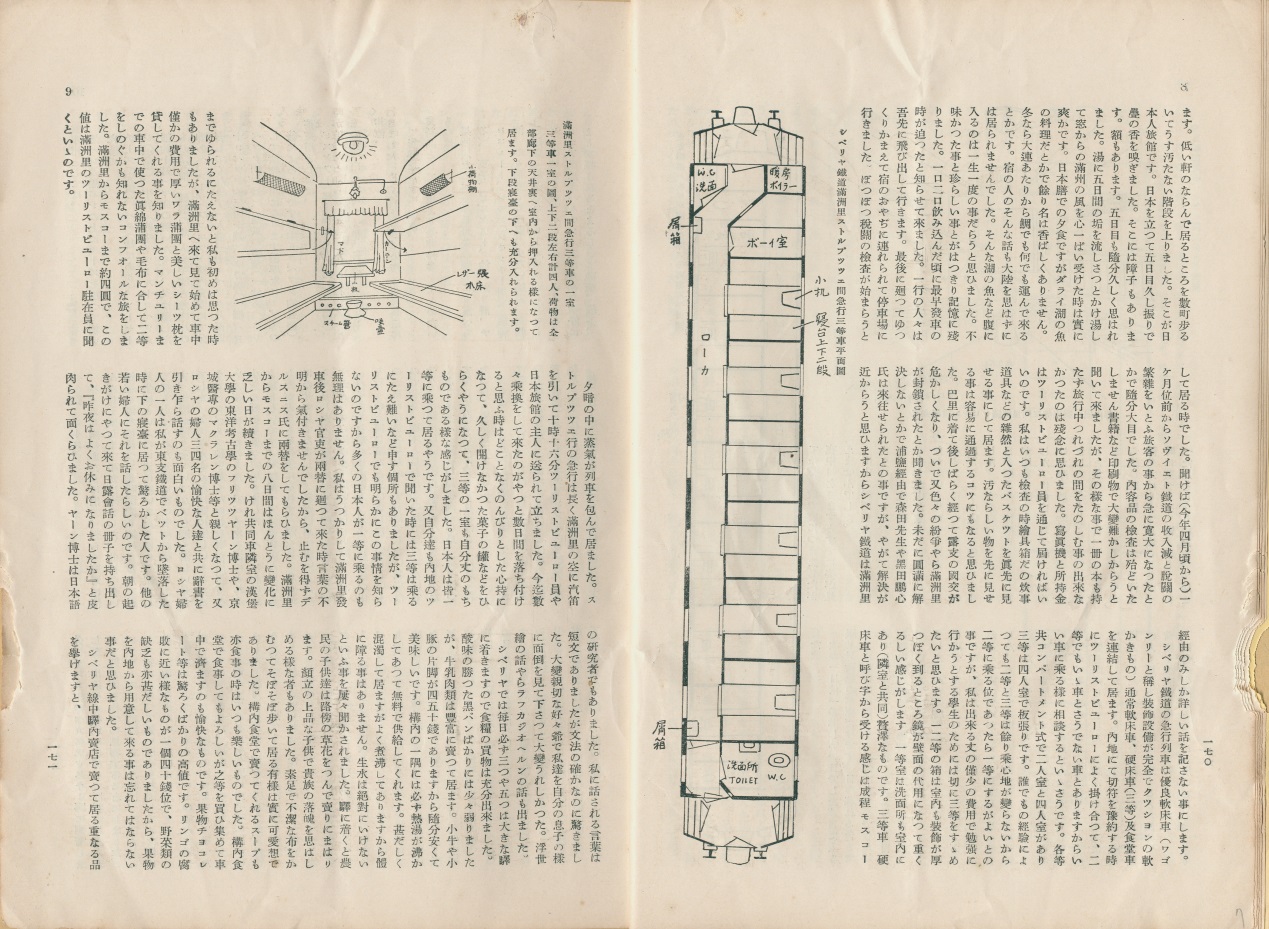 Figure 3: In the monthly magazine printed by the Tokyo Art School Alumni Association in 1929, Minao Shimamura published “A Guide to Study in Paris through Taking Trans-Siberian Railway.”
Source: Identifier: T1033_02_0052, Guo Shuang-fu Collection, Taiwan Archival Information System Description: In the monthly magazine published by the Tokyo Art School Alumni Association in 1929, vol. 28, no. 6, Minao Shimamura (1904-1978) introduced his travel experiences taking Trans-Siberian Railway to Paris. He detailed what he had seen in the trip and drew the layout of the train and his carriage. This record gives us a glimpse of what Yen Shui-long’s journey might have been like when he went to France. When Yen Shui-long stayed in France, he not only learned oil painting in La Grande Chaumière and Acadèmie Art Moderne, but also copied classical paintings in the Louvre, gradually developing his own style. His paintings, Girl and Parc de Montsouris (see Figure 4) were selected for the Autumn Salon in France in 1931. Parc de Montsouris, where Yen Shui-long often walked with his friend Lin Pan-long, was located in southern Paris. Lin Pan-long (1901-1983) was the elder son of Lin Xian-tang. He studied in France after graduating from the Law School of Tokyo Imperial University in 1925. Parc de Montsouris depicts several visitors resting on green grass and around shady trees. The color tones are calm, steady, and elegant. This painting was bought by Lin Xian-tang and his wife in May, 1933, while Yen Shui-long was featuring his exhibition of studying in Europe (see Figure 5). 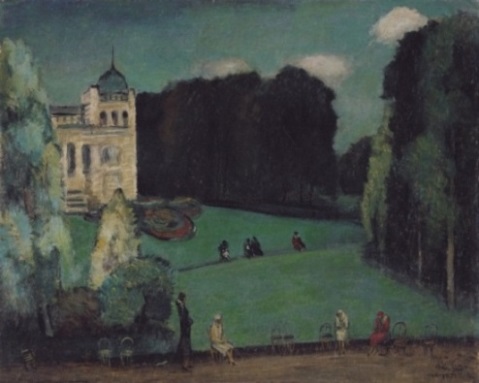 Figure 4: Parc de Montsouris, painted by Yen Shui-long in 1931. Oil on Canvas, 73x90cm. Now stored in the Taipei Fine Arts Museum.
Source: Identifier: GAN_04_01_001, Yen Shui-long Painting and Papers, Taiwan Archival Information System Description: The building in the upper left corner is the Palais du Bardo, established after the Paris International Exposition in 1867. It was a famous landmark in the Parc de Montsouris. Regrettably it was destroyed in a fire accident in 1991.  Figure 5: Image of The Diary of Lin Xian-tang from May 13th, 1933.
Source: The Diary of Lin Xian-tang, Taiwan Diary Knowledge Bank Description: After Yen Shui-long went back to Taiwan, he featured personal exhibition of studying in Europe. Lin Xian-tang took his wife and children to Yen’s exhibition and bought his paintings. In his diary on May 13th, 1933, he wrote: “At 9:00, my wife, Pan-long, Yo-long, Aiko and I went to Taichung Library to see the exhibition of Yen Shui-long’s paintings created in Europe. My wife bought Parc de Montsouris and Pont Neuf. Yen invited us to take pictures to commemorate the event.” Yen Shui-long worked very hard while studying in France. Nevertheless, he had liver disease due to poor nutrition from his financial difficulties. In the spring of 1932, he moved to Cannes, a sunshine city located in southern France, to cure his disease. When he was living in Cannes, he met a Fauvism artist Kees van Dongen (1877-1968) and accepted his mentoring. Port of Cannes depicts sailing boats berthed near the port and features the mountain city. The representation of colors and lights presents the styles of Impressionism and Post-Impressionism (see Figure 6).  Figure 6: Port of Cannes, painted by Yen Shui-long in 1932. Oil on Canvas, 52x44cm, private collection.
Source: Identifier: GAN_04_01_002, Yen Shui-long Painting and Papers, Taiwan Archival Information System In October, 1932, Yen Shui-long’s fund had nearly run out due to his disease. Under health and financial pressures, he had to end his journey and leave Paris. During his three years of living in Europe, he was inspired by abundant exhibitions and featured crafts. These experiences not only sparked his interest in indigenous themes but also stimulated him to think of the possibilities of combining traditional craft and modern arts. Since 1937, Yen Shui-long started to research techniques and ingredients of traditional craft of Taiwan and dedicated himself to promoting the art of craft. In April, 1970, at nearly 70 years old, Yen Shui-long started his journey of investigating art and craft education in Japan, Europe, and America. He landed in France again, thinking back on his experience of studying abroad in Paris (see Figure 7 & 8). On August 18, Yen Shui-long sent a postcard to his friend Liu Chi-hsiang, who had also studied in France in the 1930s (see Figure 9). In the postcard, Yen Shui-long shared his itinerary and his mixed feelings about returning to Paris after 40 years, thinking of his old friends who had studied in France together. He also mentioned that Paris has become a modern metropolis and its characteristics were more vivid than before.  Figure 7: Yen Shui-long’s visa, issued on August 4, 1970.
Source: Identifier: GAN_01_01_016, Yen Shui-long Painting and Papers, Taiwan Archival Information System  Figure 8: Yen Shui-long’s sketch of Paris in the 1970s
Source: Identifier: GAN_04_03_009, Yen Shui-long Painting and Papers, Taiwan Archival Information System Description: While visiting Europe and America to investigate craft education and beautification of cityscapes, Yen Shui-long left many sketches of urban landscapes. His trip started from April to the end of December in 1970.  Figure 9: On August 18, 1970, Yen Shui-long sent a postcard to Liu Chi-hsiang.
Source: Liu Chi-hsiang Painting and Papers In 1981, Yen Shui-long finished another oil painting called Port of Cannes. Yen Shui-long portrayed the scenery he had seen when visited southern France. In the painting, settlements of Saint-Paul-de-Vence are nestled against the mountain like stacked blocks. Tender and lively color tones make the blue ocean and sky more brilliant, representing a romantic atmosphere of southern Europe in the summer time.  Figure 10: Port of Cannes, painted by Yen Shui-long in 1981. Oil on Canvas, 60.5x73cm, private collection.
Source: Identifier: GAN_04_01_048, Yen Shui-long Painting and Papers, Taiwan Archival Information System |
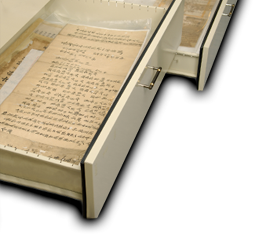 |


